
Last week, Bessemer Venture Partners, a venture capital firm focused on consumer, enterprise, and healthcare startups, unveiled their annual State of the Cloud presentation and predictions for 2021. In this blog post, we’ll take a look at some of the most notable cloud economy trends, milestones, and insights the firm uncovered in this year’s report, along with a few key strategies they’ve highlighted to help cloud businesses drive sustainable growth and momentum in the coming year.
Pandemic as Transformation Accelerator
Not surprisingly, this year’s presentation revolves around the pandemic as a major accelerator of transformation for the cloud economy. As Bessemer Partner, Elliott Robinson, notes at the outset of the presentation, “as venture capitalists, we’re constantly mapping out and planning for different scenarios; however, a global pandemic had not been one of them.”
Byron Deeter, Bessemer Partner, highlights three specific industries that have embraced cloud solutions more aggressively than others throughout the pandemic:
- In the healthcare industry, Deeter notes a whopping 300x increase in telehealth utilization, enabled by cloud technology. (We recently explored this phenomenon, along with a look ahead at the future of telehealth and other trends driving transformation in the healthcare industry, in our two-part Healthcare Outlook 2021 series.)
- In education, we saw 93% of households with school age children engaged in distance learning in 2020, enabled by numerous vertical SaaS solutions
- Small Business Owners, Deeter notes that many brick & mortar businesses would have had to close permanently without cloud solutions; those who embraced SaaS tools for contactless delivery and pickup options were able to stay afloat.
The Strategic Importance of the Cloud
Deeter kicks off his portion of the presentation with a look at just how intensely the pandemic accelerated digital transformation. As Microsoft CEO, Satya Nadella, summed it up, “We’ve seen two years’ worth of digital transformation in two months.” (You can read more about this rapid transformation, and the impact on Salesforce ISVs in particular, in the 2021 CodeScience State of the AppExchange Partners report.)
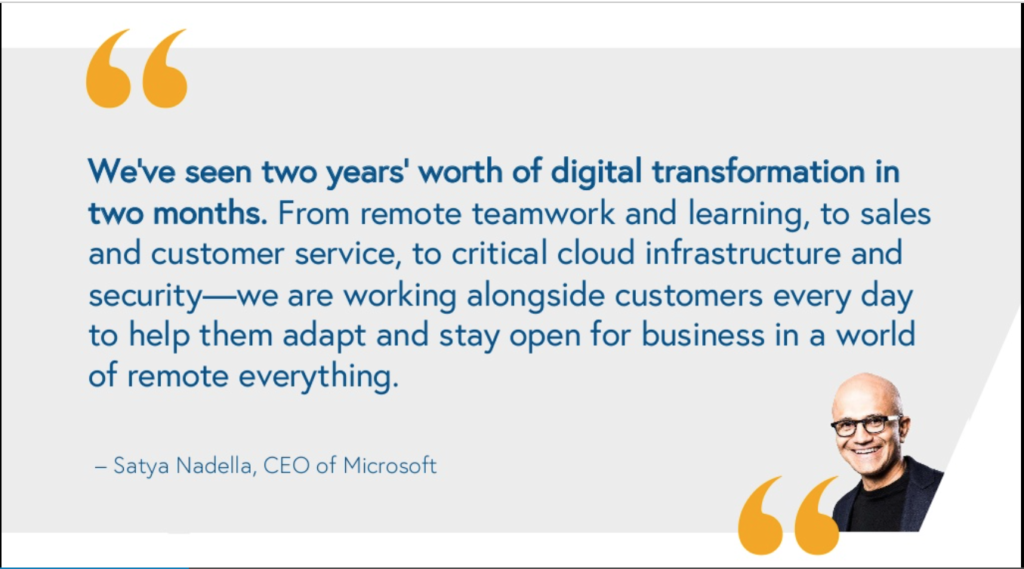
Deeter notes that it’s quite telling that Microsoft selected Nadella, who had previously been in charge of Microsoft’s Azure cloud business, to take over as CEO. Likewise, when Jeff Bezos stepped down as CEO of Amazon, the board selected the head of their AWS cloud business, Andy Jassy, to take his place. “These are very clear and decisive declarations on the strategic importance of the cloud,” Deeter explains.
Remarkable Growth of the Public Cloud
Deeter gets into the meat of the presentation with a thorough review of various trends and remarkable growth statistics within the public cloud market. Of note, the top five public cloud companies by market cap — PayPal, Adobe, Salesforce, Shopify, and Zoom — saw a 70% increase in the last year. Collectively they are now worth over $1T.
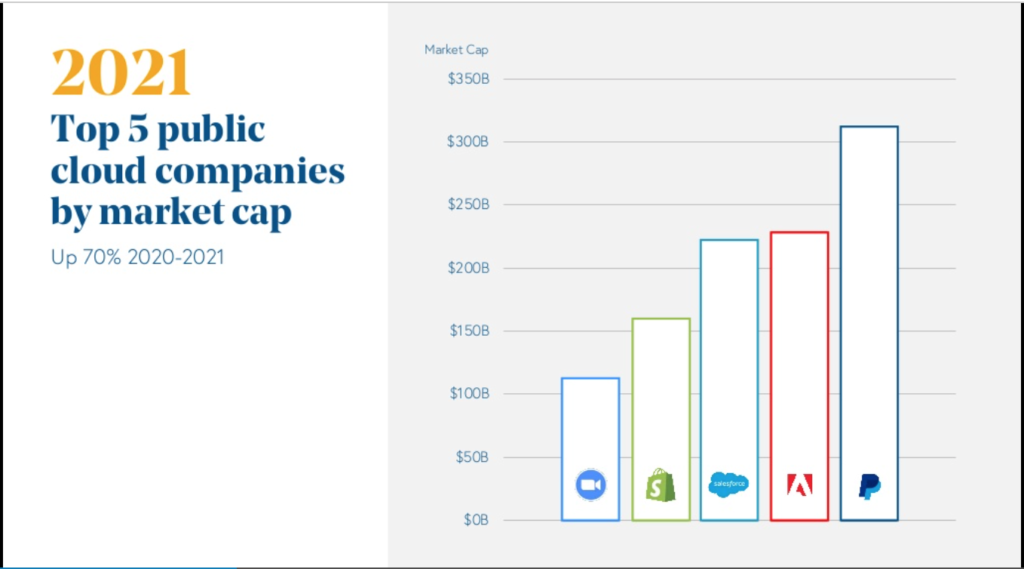
Another stunning set of figures centers around Bessemer Cloud Index:
- When the firm presented at SaaStr Build 2019, the total cloud market cap was at $690B. At that time, they predicted that it would soon reach $1T
- This happened much faster than they expected, as the milestone was reached only one year later, in Feb. 2020
- At that time, the firm predicted the index would reach $2T over the next two years, but it took only nine months to double!
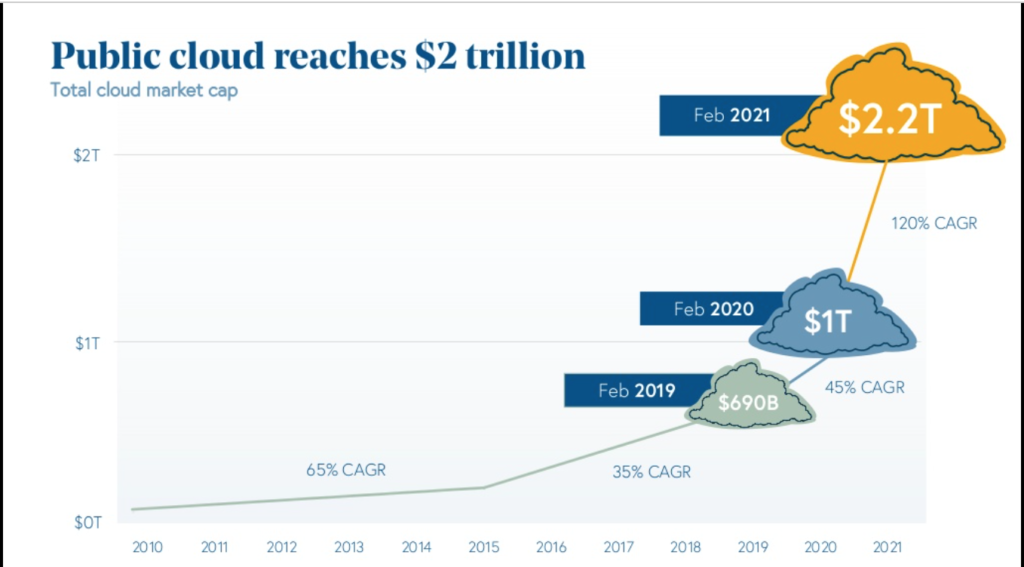
Yet another angle of this acceleration can be seen in the explosive growth of IPO and M&A activity. Deeter notes that, despite a tumultuous first half of the year as the world responded to the onset of the pandemic, “the second half of 2020 was marked by a record-breaking level of activity in the IPO and M&A worlds.” More IPOs doubled in value in their opening days since 1999.
In the midst of this blizzard of IPO activity, Snowflake became the largest software IPO in history as well as the fifth largest tech IPO ever. “This was a huge milestone for the cloud,” Deeter declares, “and it demonstrates the still massive potential here in terms of overall market growth ahead. It also points to the fundamental ways in which the data stack for companies is undergoing significant transformation as more companies do this migration to the cloud.”
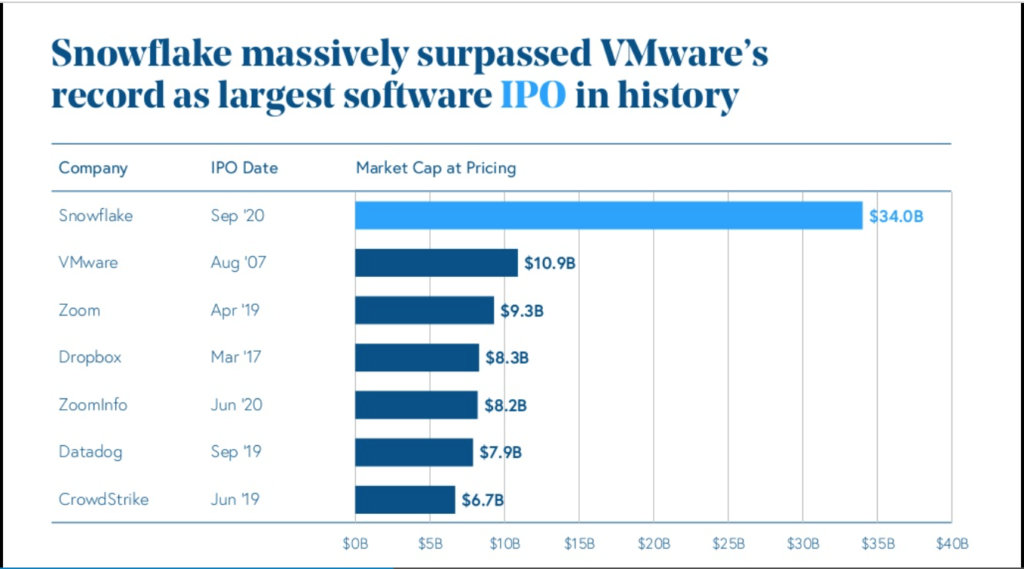
On the M&A side, the most notable milestone was of course the Salesforce acquisition of Slack. In addition to the largest ever public SaaS acquisition, this was the second largest enterprise software acquisition in history. Including the Slack acquisition, Salesforce was responsible for three of the top 10 largest SaaS acquisitions in 2020. As Deeter explains, “it’s no surprise that they see the long term, enduring value of the cloud, and they’re willing to pay up for it.”
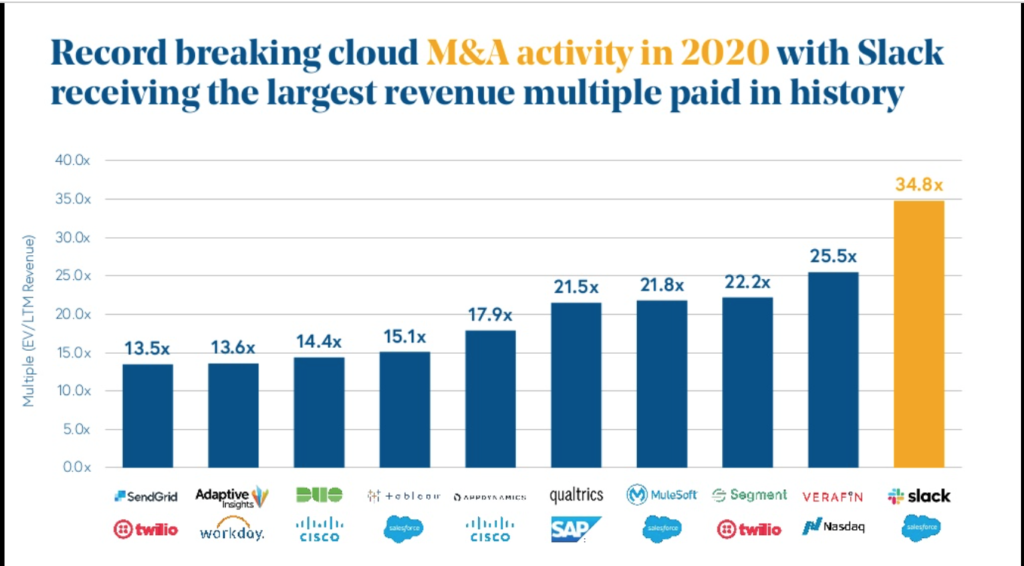
He closes with some encouraging words for aspiring cloud entrepreneurs: “Within the next three years, we expect that cloud will become the dominant delivery model for all of software, as we embody a cloud-first world.”
The Private Cloud Mirrors the Growth of the Public Cloud
Bessemer Partners, Mary D’Onofrio and Elliott Robinson, then take the stage to discuss insights, trends, and progress in the private cloud market. Robinson notes that the number of private unicorns doubled in the past two years, and this growth shows no sign of slowing.
D’Onofrio and Robinson see three main drivers of this rapid growth:
- Cloud multiples are going up, having increased by over 150% in the last five years.
- Cloud companies are growing faster than ever, driving premium valuations.
- There is more demand than supply for cloud assets, with a 10x increase in investments into private cloud companies.
D’Onofrio explains that the takeaway for founders “is that building a cloud business today is as valuable as it has ever been before. For every $1 of ARR you generate, investors are adding more than $20 to the value of your business.”
She then takes a look at the impressive growth endurance rates of both the public and private clouds, noting that, “time and time again, cloud companies have defied gravity and outperformed even the wildest growth expectations from Wall Street, unprecedented in terms of scale and pace.”
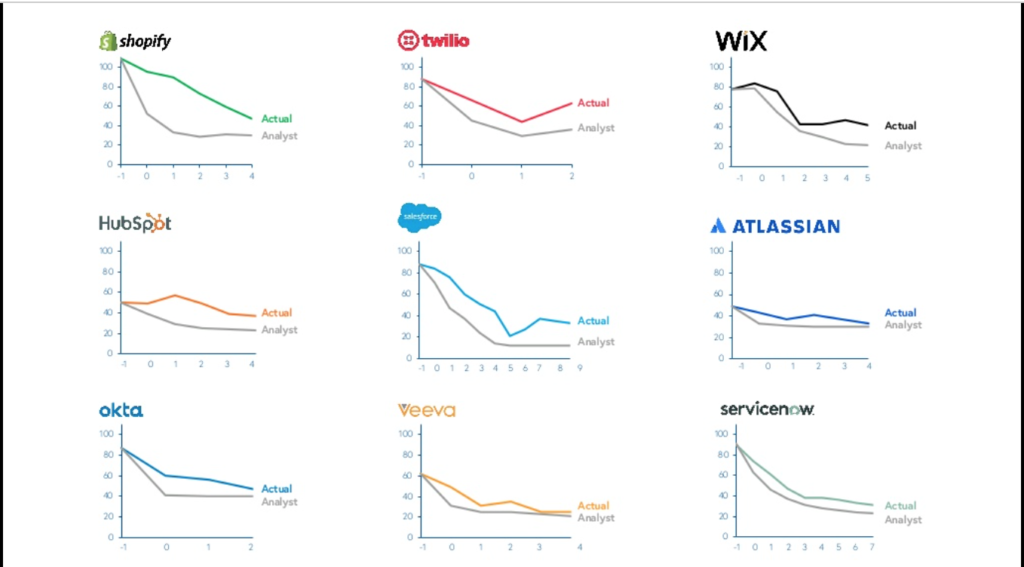
She closes with a bit of advice for cloud companies looking to scale sustainably: “The most effective lever in driving high growth endurance is your go-to-market strategy.”
Strategies for Growth in the New Normal
Robinson then explores three key go-to-market strategies that top cloud companies are leveraging for sustainable growth in the “New Normal”:
- Product-Led Growth: PLG has been growing over the past several years as the affordability of solutions has pushed purchasing decisions down to the end user. The power of PLG is evident in the numbers — Robinson notes that “the cumulative market cap of product-led growth companies has grown more than 100x in six years.”
- Usage-based pricing models: This model goes hand in hand with PLG. Usage-based pricing helps minimize friction during customer onboarding, as customers only pay for what they’re using. Robinson explains that companies who employ this model typically have best-in-class retention results.
- Tapping into the power of cloud marketplaces: This should come as no surprise to existing Salesforce partners, who are well aware of the powerful benefits that come from leveraging the expansive Salesforce ecosystem and AppExchange! Robinson points to three impressive numbers that demonstrate the power of cloud marketplaces: 80% of sales interactions will take place through digital channels by 2025; SaaS businesses have experienced 50% faster sales cycles on average through cloud marketplaces; and the firm predicts revenue generated through cloud marketplaces will reach $3B in 2021.
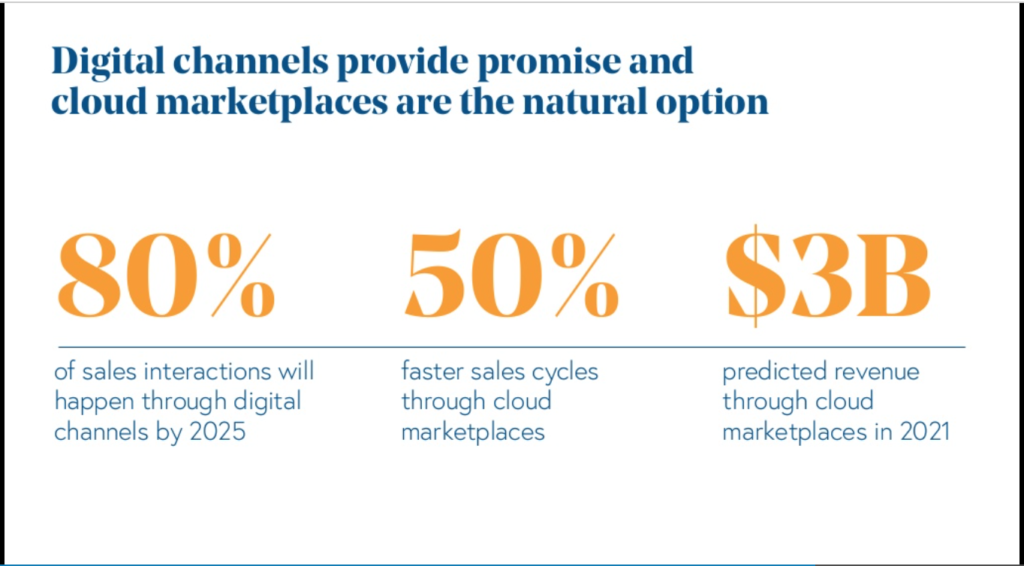
Clearly, the Bessemer team sees the State of the Cloud as strong, thriving and poised for continued growth in the coming years. You can view the full presentation, including the firm’s seven predictions for the 2021 State of the Cloud and several resources ISVs can use to grow their cloud business, here.
Got a burning question about selling on the Salesforce AppExchange or a complex development challenge you could use a hand with? We’re here to help. We’ve helped build 10% of the apps on the AppExchange. Contact us today!


